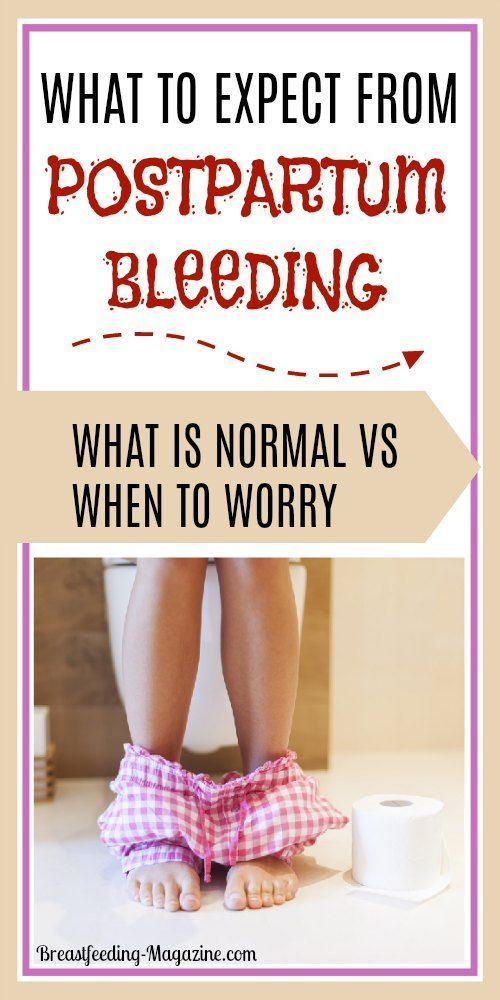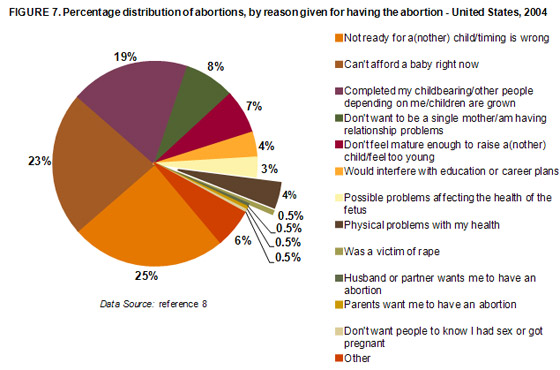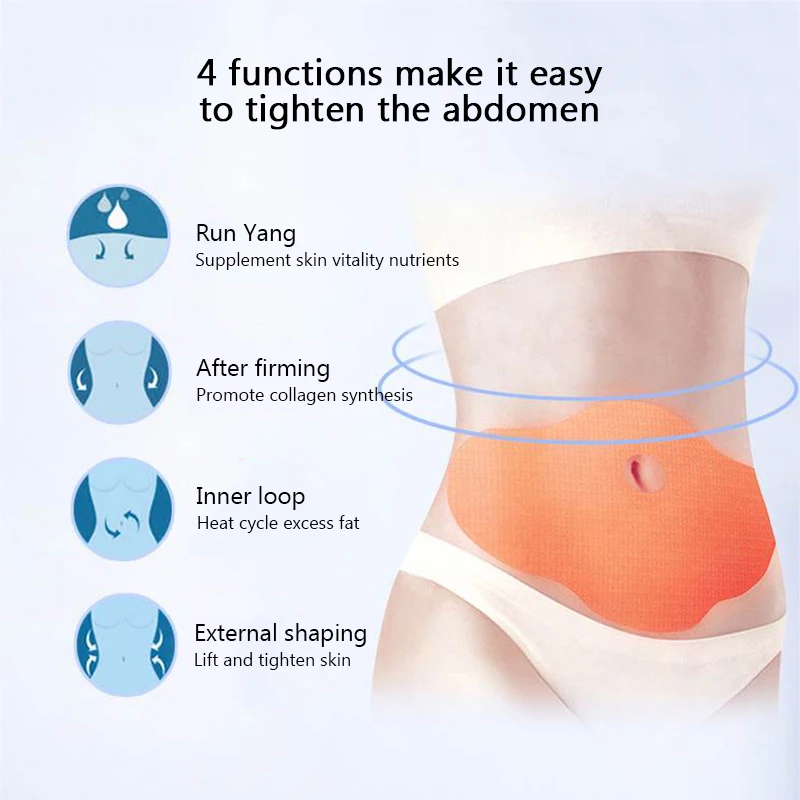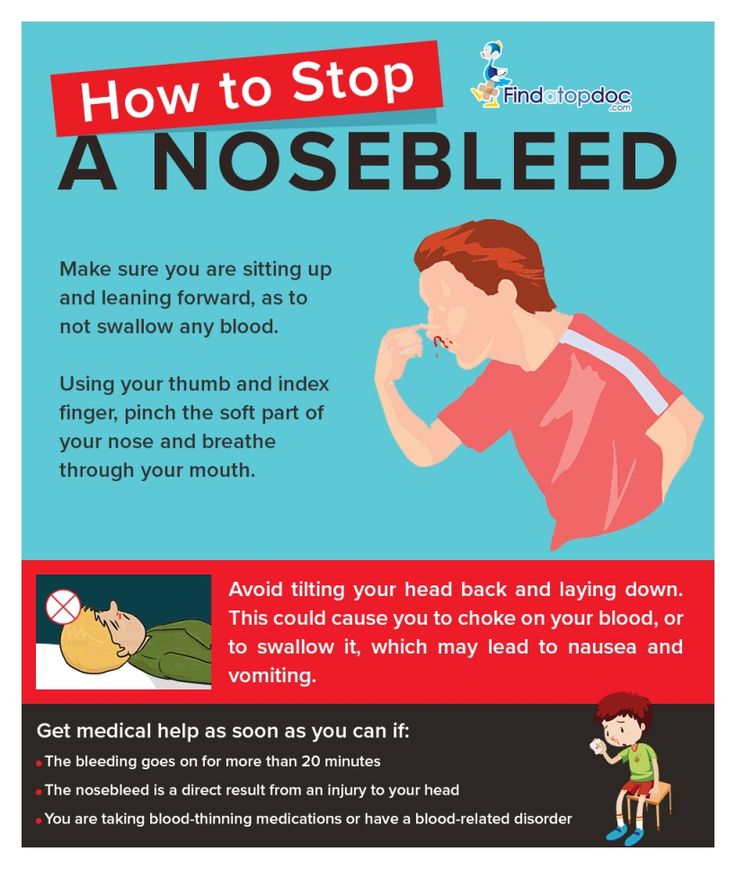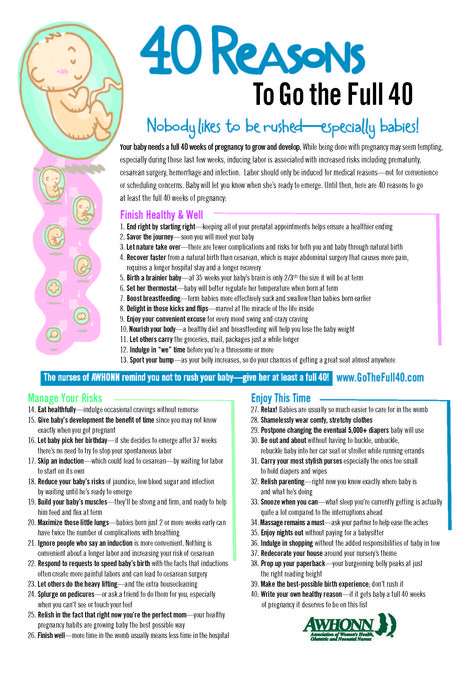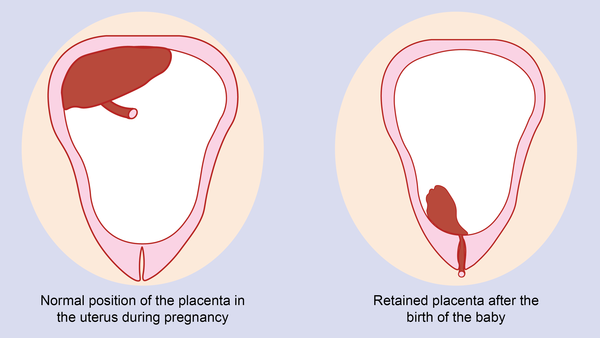First period after giving birth
First Period After Pregnancy: What to Expect
Overview
From glowing skin to a newfound appreciation for your body, there are many things to love about pregnancy. Another is that you’ll have at least nine months of freedom from your period. But after you deliver, you’re probably curious what will happen with your menstrual cycle.
When your period returns often depends on whether or not you breastfeed. And just like your life after baby, you might find your periods after pregnancy are somewhat different.
When will my period return?
Your period will typically return about six to eight weeks after you give birth, if you aren’t breastfeeding. If you do breastfeed, the timing for a period to return can vary. Those who practice exclusive breastfeeding might not have a period the entire time they breastfeed. “Exclusive breastfeeding” means that your baby is receiving only your breast milk. But for others, it might return after a couple of months, whether they’re breastfeeding or not.
If your period does return quickly after giving birth and you had a vaginal delivery, your doctor might recommend that you avoid using tampons during your first menstruation post-baby.
This is because your body is still healing, and tampons could potentially cause trauma. Ask your doctor if you can return to using tampons at your six-week postpartum checkup.
Why don’t breastfeeding women get their periods as quickly?
Typically, women who are breastfeeding don’t get their periods as quickly because of the body’s hormones. Prolactin, the hormone needed to produce breast milk, can suppress reproductive hormones. As a result, you don’t ovulate or release an egg for fertilization. Without this process, you most likely won’t menstruate.
Will my period affect my breast milk?
When your period does return, you may notice some changes in your milk supply or your baby’s reaction to breast milk. The hormonal changes that cause your body to have your period may also influence your breast milk.
The hormonal changes that cause your body to have your period may also influence your breast milk.
For instance, you might notice a decrease in your milk supply or a change in how often your baby wants to nurse. The hormone changes might also affect your breast milk’s composition and how it tastes to your baby. These changes are usually very minor, however, and shouldn’t affect your ability to breastfeed your baby.
What about birth control?
Some use breastfeeding as a natural birth control method. According to the Association of Reproductive Health Professionals, fewer than 1 out of 100 women will get pregnant annually if they’re engaging in exclusive breastfeeding. Even though breastfeeding reduces your fertility, it’s not an absolute guarantee you won’t get pregnant again.
The key here is exclusive breastfeeding. Other than breast milk, no fluids or solids are given to the baby with exclusive breastfeeding. Even water. Supplements or vitamins don’t interfere and can be given to the baby. Breastfeeding that doesn’t fit this description might not protect against another pregnancy.
Breastfeeding that doesn’t fit this description might not protect against another pregnancy.
If you’re breastfeeding and your period does return, you’re no longer protected against getting pregnant. It’s also important to note that it can be difficult to predict the return of fertility. You will ovulate before your period starts, so it’s entirely possible to get pregnant again before your period returns.
Safe and effective birth control methods are available for those who are breastfeeding. Nonhormonal options such as the copper intrauterine device (IUD), condoms, and diaphragms are always safe for breastfeeding.
There are also some hormonal birth control options that are considered safe during breastfeeding. Your doctor can provide the latest updates on specific types of birth control. In general, low-dose combination pills that contain estrogen and progestin are considered safe after you’ve healed from birth. Progestin-only pills are also safe to use while breastfeeding.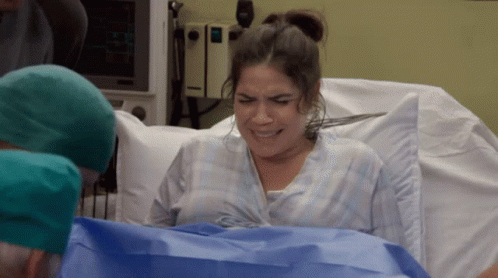
How might my period be different postpartum?
When you do start your period again, chances are the first period after delivery won’t be like your periods before you got pregnant. Your body is once again adjusting to menstruation. You may experience some of the following differences:
- cramping that might be stronger or lighter than usual
- small blood clots
- heavier flow
- flow that seems to stop and start
- increased pain
- irregular cycle lengths
The first period after your pregnancy may be heavier than you’re used to. It might also be accompanied by more intense cramping, due to an increased amount of uterine lining that needs to be shed. As you continue your cycle, these changes will likely decrease. In rare cases, complications such as thyroid problems or adenomyosis can cause heavy bleeding after pregnancy. Adenomyosis is a thickening of the uterine wall.
Women who had endometriosis before pregnancy might actually have lighter periods after giving birth. Light periods can also be caused by two rare conditions, Asherman syndrome and Sheehan syndrome. Asherman syndrome leads to scar tissue in the uterus. Sheehan syndrome is caused by damage to your pituitary gland, which may be the result of severe blood loss.
Light periods can also be caused by two rare conditions, Asherman syndrome and Sheehan syndrome. Asherman syndrome leads to scar tissue in the uterus. Sheehan syndrome is caused by damage to your pituitary gland, which may be the result of severe blood loss.
What causes mildly painful postpartum periods?
Mildly painful postpartum periods can be caused by a combination of several factors. They include:
- increased intensity of uterine cramping
- the hormones of breastfeeding
- the uterine cavity becoming larger after pregnancy, which means there’s more uterine lining to be shed during menstruation
What should I expect from my first period postpartum?
Whether you delivered your baby vaginally or by cesarean delivery, you can expect some bleeding and vaginal discharge after giving birth. Your body continues to shed the blood and tissue that lined your uterus while you were pregnant.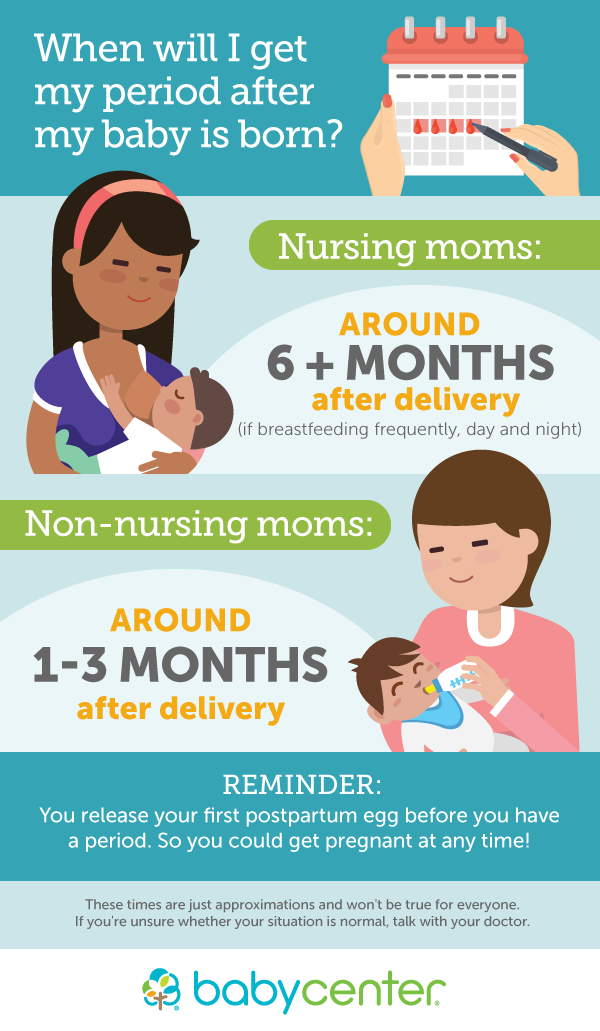
In the first few weeks, blood might be heavier and appear in clots. As the weeks go by, this blood gives way to vaginal discharge known as lochia. Lochia is bodily fluid that can appear clear to creamy white to red in color.
This discharge can continue for about six weeks, which is about the time your period may return if you aren’t breastfeeding. If your discharge had the appearance of lochia, stopped for some time, and then you experienced a return of bleeding, this is likely your period. If you aren’t sure if the bleeding you’re experiencing is pregnancy-related or your period, there are a few ways to tell:
- Lochia isn’t usually bright red in color beyond the first week postpartum. It’s usually lighter and can be watery or white in appearance. Bright red bleeding that occurs six or more weeks after delivery is more likely to be your period.
- Pregnancy-related bleeding can increase with increased exertion or activity. If your discharge increases with exertion and decreases when you rest, it’s more likely to be lochia.

- Lochia also tends to have a distinct odor. Lochia may have a “sweet” smell to it, since it’s mixed with leftover tissue from the pregnancy. Report any foul order to your doctor.
It can also take some time for your cycle to regulate after birth. You might find that you have your first period, skip a cycle, and then have another period that comes sooner than expected.
During your first postpartum year, it can be normal for your periods to fluctuate in length, time between cycles, and intensity of bleeding. This is especially true if you’re breastfeeding.
According to the Cleveland Clinic, most postpartum women will have a “normal” menstrual cycle of 21 to 35 days with bleeding that lasts 2 to 7 days. Period cycles can change from what you experienced before pregnancy.
What postpartum symptoms should I watch out for?
It’s important that you call a doctor if you experience any of the following symptoms:
- soaking through more than one pad every hour
- bleeding that’s accompanied by sudden and severe pain
- a sudden fever
- bleeding continuously for more than seven days
- blood clots that are bigger than a softball
- foul-smelling discharge
- severe headache
- trouble breathing
- pain while urinating
Contact your doctor if you experience these symptoms or anything else that concerns you related to your period.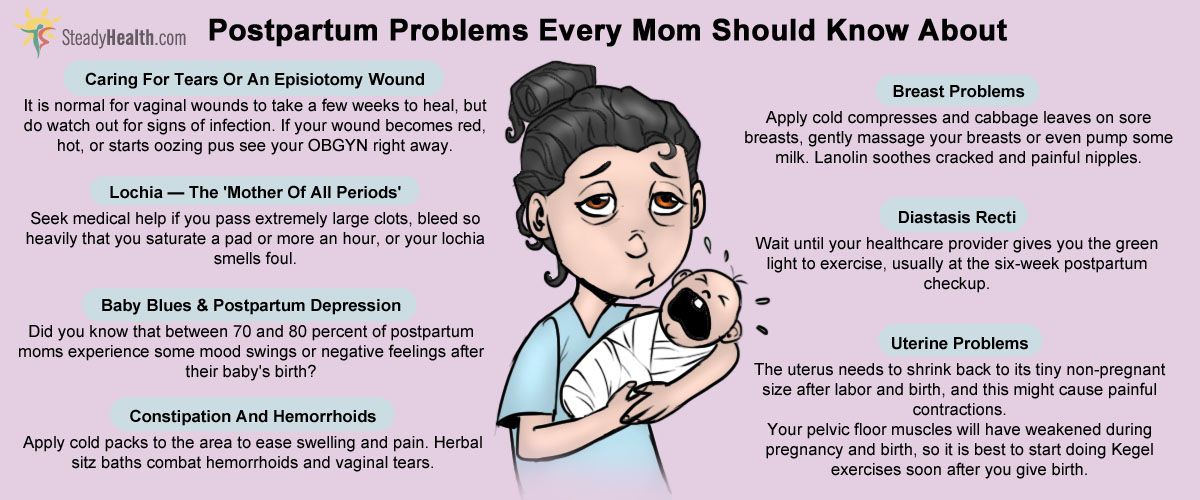 Some of these symptoms may indicate an infection.
Some of these symptoms may indicate an infection.
The takeaway
A return to your menstrual cycle is just one of the parts of recovery and returning to your prepregnancy body. In some, menstruation may be delayed due to the hormone increases associated with breastfeeding.
Breastfeeding as a form of contraception isn’t foolproof. Having a backup method, such as oral contraception or a condom, can help provide further protection. You can find a great selection of condoms here.
If anything seems out of the ordinary about your first period after pregnancy, contact your doctor. Excess bleeding or indications of infection are especially concerning for a new parent. Listen to your body and play it safe.
Parenthood How-To: DIY PadsicleWhat to Expect For Your First Period After Pregnancy
Written by WebMD Editorial Contributors
In this Article
- What to Expect With Your Period After Pregnancy
- Does Your Period Affect Your Milk Supply?
Your first period after pregnancy is also called a postpartum period. When it occurs depends on whether or not you breastfeed. Your menstrual cycle may be different after you have your baby.
When it occurs depends on whether or not you breastfeed. Your menstrual cycle may be different after you have your baby.
What to Expect With Your Period After Pregnancy
When will you get your period after pregnancy? Parents who breastfeed all the time usually don't get their period again until they stop nursing. They may also get their periods if they stop nursing partially, especially at night. Parents who bottle-feed, or do a combination of breastfeeding and bottle feeding, may get their periods as soon as five weeks after giving birth.
When you breastfeed full-time, your body produces more prolactin — the hormone that helps you produce milk for your baby. That hormone also stops your period from coming.
According to one study, over two-thirds of parents who don't breastfeed get their first period after pregnancy within 12 weeks of giving birth. Only around one-fifth of breastfeeding parents will get their period within six months of giving birth. If you are a breastfeeding parent, your menstrual cycle will return within one to two months after you stop nursing your child or start significantly reducing the amount you nurse.
If you are a breastfeeding parent, your menstrual cycle will return within one to two months after you stop nursing your child or start significantly reducing the amount you nurse.
Post-birth bleeding. Whether you had a C-section or delivered vaginally, you will have bleeding for six to eight weeks after giving birth. However, this is not considered menstruation. It is called lochia.
In the beginning, your lochia will be deep red, and you may pass a few blood clots. These clots may be as large as a plum. As the days pass, the discharge will become more watery and fade to pinkish or brownish. After a few weeks, the lochia is usually whitish or yellowish and may not be present every single day.
Parents experiencing lochia after giving birth should only use menstrual pads or maternity pads, not tampons. Nothing should enter the vagina within six weeks of giving birth.
You can still get pregnant. Even if you don't get your period after giving birth because you're breastfeeding, there's a small chance you can get pregnant because you might still ovulate during this time.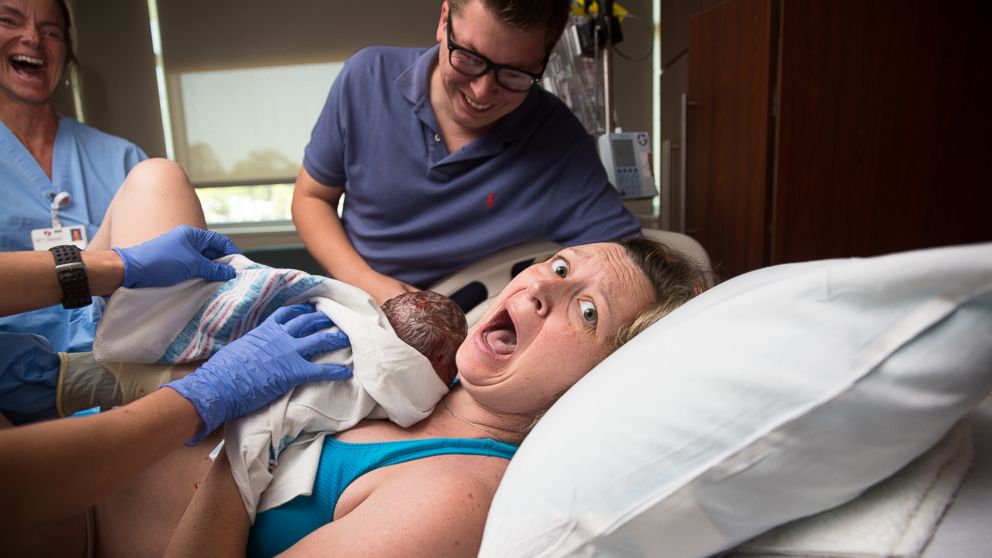 The risk is between one and five percent. Consider which birth control methods you will use to manage this risk.
The risk is between one and five percent. Consider which birth control methods you will use to manage this risk.
How your period changes after pregnancy. Once your period returns, it may be different than it was before. It may be heavier. You may have more or less cramping than you had before. Your periods may be irregular, especially if you are still breastfeeding sometimes. At first, you may have some more clotting in your periods than before. Experts recommend seeking medical advice if you have blood clots in your period for at least a week.
Some people find their periods get easier after pregnancy. This may be because the uterus has stretched out and relaxed. Others find they are more difficult, which may be due to the larger, stretched out uterus having more tissue to shed each cycle.
People with endometriosis often experience easier periods after pregnancy. However, this change is usually only temporary, and more painful periods come back after a few months.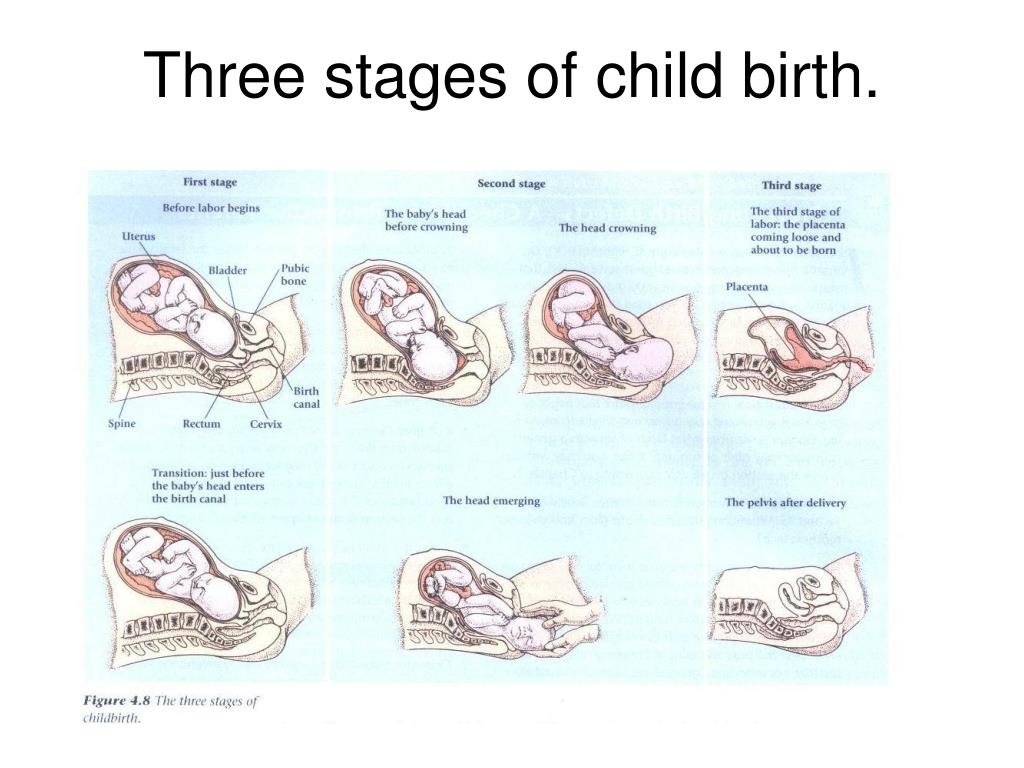
Irregular periods. Just having one menstrual cycle after pregnancy does not mean your periods have returned. You may or may not have ovulated. You are more likely to ovulate if you have started to wean your child.
Does Your Period Affect Your Milk Supply?
Your menstrual cycle may affect your milk supply if you get your period. In the time between ovulation and when you get your period, your milk supply may be lower. Experts recommend adding calcium and magnesium to your diet to maintain a steady supply of breast milk throughout your whole cycle.
Having your period can also affect how your breast milk tastes. Your baby may be fussier during feedings while you're menstruating due to a change in taste.
Postpartum period - Juno
Postpartum period: content of the article
Duration of the postpartum period
In obstetrics, it is customary to single out the early and late postpartum periods. The early one lasts from 2 hours to a day. Its duration depends on the condition of the woman. Usually the duration of the early period is 6-8 weeks. Normally, the puerperal is transferred to the postpartum department 2 hours after the birth and 6-24 hours after the caesarean section. The time spent in the delivery room or intensive care unit is the duration of the early postpartum period. nine0008
Its duration depends on the condition of the woman. Usually the duration of the early period is 6-8 weeks. Normally, the puerperal is transferred to the postpartum department 2 hours after the birth and 6-24 hours after the caesarean section. The time spent in the delivery room or intensive care unit is the duration of the early postpartum period. nine0008
The late period begins from the moment the mother is transferred to the postpartum ward. The duration is determined by how quickly the reproductive organs recover, in particular, the uterus shrinks to normal size.
Physiology of the postpartum period: what changes occur in the body
During pregnancy, a woman's body is seriously rebuilt, changing its usual state. After childbirth, all organs and systems undergo tangible physiological changes: nine0008
- Placental circulation stops, the number of heartbeats decreases. Normally, the indicators of the cardiovascular system should be restored by 10-14 days after childbirth.

- Bladder restores tone after 3-4 weeks, blood flow in the kidneys is restored within 6 postpartum weeks.
- Gastrointestinal motility returns to normal levels within a month on average.
The nervous, cardiovascular, endocrine, and immune systems are also rebuilt. The most pronounced reverse restorative changes occur in the genital organs, especially in the uterus. nine0008
What happens to the uterus
The most intense involution (contraction) is observed within 8-12 days after delivery. The pace depends on the number of pregnancies and childbirth, the degree of stretching, breastfeeding. The uterus contracts faster in primiparous women, in those who breastfeed their babies. In multiparous, as well as in those who carried a large child, the uterus contracts longer.
After a caesarean section, the uterus contracts longer, and more careful care is also required. nine0008
Start of breastfeeding
Lactation is initiated and maintained by hormones such as prolactin and oxytocin. Early attachment to the breast (within an hour after childbirth) has a good effect on lactation and uterine contraction. In order to have enough milk, you need to regularly feed the baby on demand.
Early attachment to the breast (within an hour after childbirth) has a good effect on lactation and uterine contraction. In order to have enough milk, you need to regularly feed the baby on demand.
In the first 2-3 days after childbirth, colostrum is released from the breast. It differs from milk in having less fat and carbohydrates, but with a higher content of proteins and salts. The product has a high energy value, it also contains a lot of immunoglobulins that protect the body of a newborn. nine0008
From 3-4 days, milk begins to be produced, and its amount increases every day. This is the optimal food for babies, containing the necessary amount of nutrients.
Mammary glands
Under the influence of hormones, the milk ducts are formed and the blood rushes intensely to the glands. The breast becomes heavy, sensitive and "poured" with the arrival of milk. Discomfort may appear - pain, tingling, swelling. When breastfeeding improves, the discomfort will pass.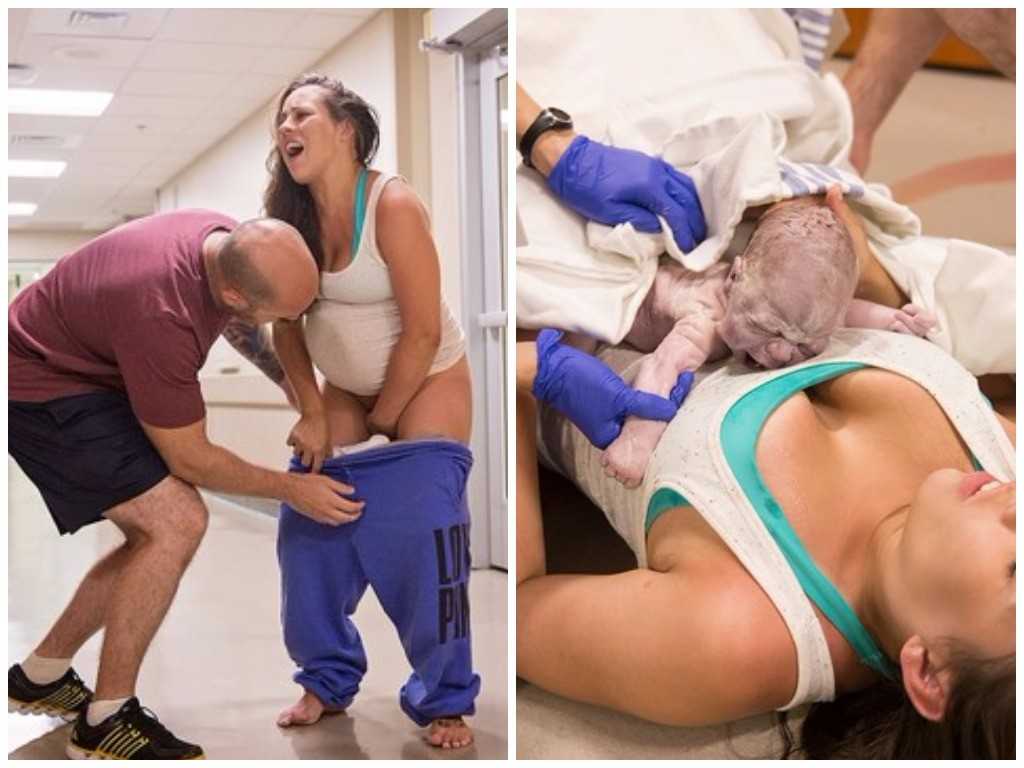 nine0008
nine0008
If there is a lot of milk, and the breast "swells" too much, you can express until relieved. Be sure to wear comfortable underwear, apply the baby more often. Remember that active lactation helps the female body recover faster.
Vagina and perineum
During natural childbirth, the area between the vagina and the anus is stretched. At breaks or cuts, stitches are applied. During the healing period, swelling and pain are possible. The muscles of the perineum are restored within 10-12 days, the anterior abdominal wall - by the 6th week. nine0008
About 2-3 weeks after childbirth, the walls of the vagina are edematous, then their normal state is restored. The lumen of the vagina often does not recover, especially after repeated births - it becomes a little wider.
Ovaries in the postpartum period
Follicle maturation begins in the ovaries. Lactating women, against the background of prolactin production, do not have menstruation for several months, and sometimes until the end of lactation. In non-breastfeeding women, menstruation begins after 6-9weeks after childbirth.
In non-breastfeeding women, menstruation begins after 6-9weeks after childbirth.
The first menstruation after childbirth often occurs without ovulation. In the future (from 2-3 cycles), the ability for a new pregnancy is restored.
Postnatal care and care
The postpartum stage is a time of adaptation. The mother needs to be ready for certain changes and even discomfort. A new mother may be concerned about:
- Abdominal cramps. The uterus contracts, which causes pain. More often, pain is disturbed when feeding - try to choose a more comfortable position. nine0017
- Discomfort when urinating. This condition usually lasts for the first few days after childbirth. Warm water will help alleviate the condition - you need to water the vaginal area with it while visiting the toilet.
- Swelling of the legs. The phenomenon can last as long as the normal functioning of the kidneys is restored. It is advisable to raise your legs more often.
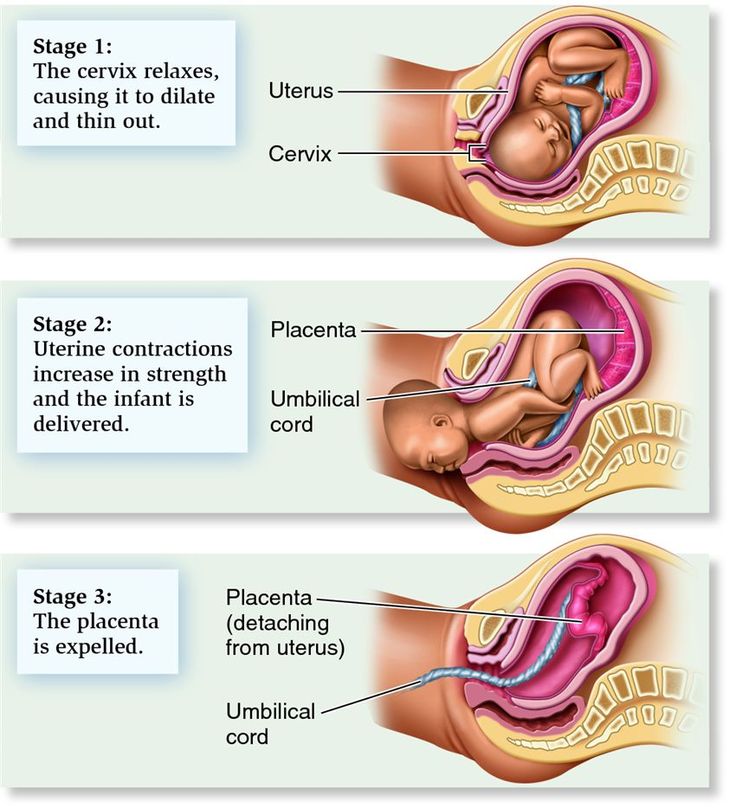
- Constipation. Some women are simply afraid to push, in addition, the abdominal muscles weaken, the hormonal background changes, which causes a delay in defecation. You need to eat more vegetables, fruits, drink plenty of water. nine0017
- Severe sweating is especially pronounced at night and is associated with a changing hormonal background. Ventilate the room and wear cotton underwear.
Other possible problems include hemorrhoids, decreased libido, stretch marks, and hair loss. It is logical that the newly-made mother is very tired. Childbirth and the postpartum period is a serious physical and emotional stress. It is important to adhere to hygiene recommendations.
Postpartum hygiene
To avoid problems with health and well-being, follow the rules of intimate and personal hygiene:
- Wash your face several times a day, preferably in the morning, evening and after going to the toilet.
- Before hygiene procedures, be sure to wash your hands with soap and water, wash from front to back.
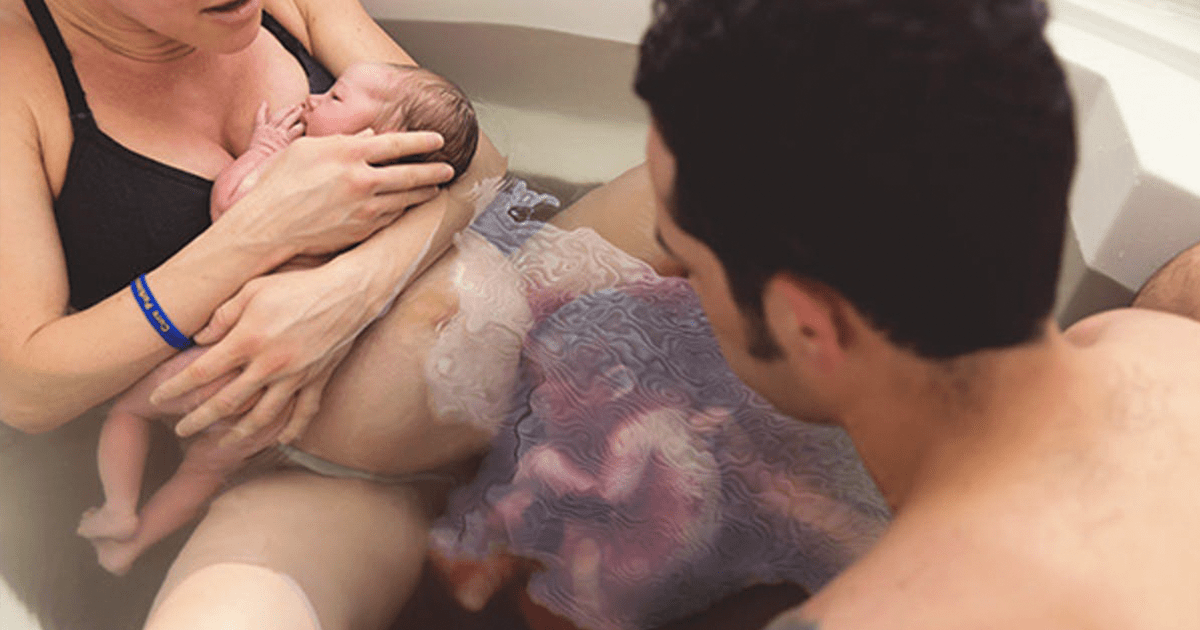 Wash your anus last.
Wash your anus last. - Avoid spraying water directly into the vagina, use only hands - no sponges or other objects. nine0017
- Dry skin and mucous membranes with a disposable towel (or individual).
- Use baby or hypoallergenic intimate soap as a cleanser.
- Change maternity pads every 2-4 hours regardless of fullness.
- Refrain from bathing for 6 weeks postpartum. There is a risk of infection because the cervix is ajar.
- Stitches after caesarean section can be washed, but should not be rubbed with a washcloth. It is necessary to treat them with brilliant green or antiseptics until a crust appears. nine0017
Do not wear tight underwear, as it puts pressure on the crotch. Try to wear only cotton things, change bed linen every 5 days, underwear - daily. Sexual rest is about 1.5-2 months. You can return to intimate life, provided that there is a desire, at the same time the discharge has ended and nothing causes concern.
Discharge and bleeding in the postpartum period
The endometrium (the tissue that lines the uterus) and blood are shed after childbirth. Such secretions are called lochia. In the first 2-3 days they have a bright red color, as they have a blood character. By day 4-5, they become bloody-serous, with a brown or yellow tint. After about a week, mucus appears in the discharge, and the color changes to a more transparent, white one. With a physiological course, lochia has a specific rotten smell. nine0008
Such secretions are called lochia. In the first 2-3 days they have a bright red color, as they have a blood character. By day 4-5, they become bloody-serous, with a brown or yellow tint. After about a week, mucus appears in the discharge, and the color changes to a more transparent, white one. With a physiological course, lochia has a specific rotten smell. nine0008
Retention of lochia in the uterine cavity is a pathological condition called a lochiometer. It is dangerous for the development of infection and inflammation. Therefore, if the discharge stops abruptly, this should alert. No less dangerous and abrupt bleeding, or simply an increased amount of discharge. In case of any concerns, you should immediately contact the doctor.
When do you need to visit the doctor for the first time and what will he do?
If the postpartum period proceeds normally, an examination by a gynecologist should be completed approximately 2 months after childbirth. The management of women after the maternity hospital is carried out by a women's consultation.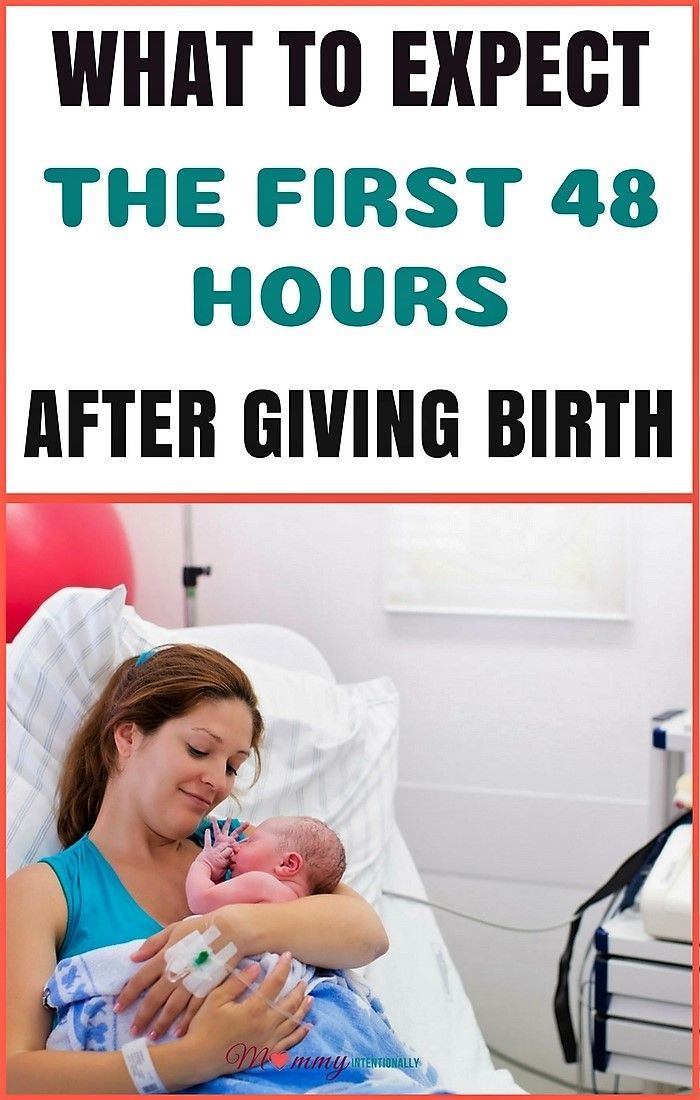 nine0008
nine0008
If you had a caesarean section, then you should go to the doctor 1-2 weeks after the operation to check the condition of the suture. When you go to the doctor, prepare a list of questions, take a referral for tests and other examinations.
Postnatal care
At the first visit, the doctor will ask how the birth proceeded, how long it lasted, and also conduct an examination on the armchair. The examination usually includes:
- Assessment of the condition of the external genital organs. The doctor will see if there are any fistulas, if the walls of the vagina have recovered. nine0017
- Examination of the cervix. The doctor checks for tears or broken sutures, assesses the need for a colposcopy.
- Smears and cytology. They allow to detect inflammatory processes and infections.
- Palpation of the ovaries and uterus. The doctor evaluates the size, elasticity. A flabby, enlarged uterus can be a sign of endometritis.
If necessary, the doctor additionally prescribes an ultrasound examination, which determines whether there are any remains of the placenta or blood clots in the uterus. nine0008
nine0008
When is a doctor needed immediately?
In obstetrics, there is a certain set of symptoms that indicate postpartum complications. Urgently call an ambulance or urgently consult a doctor if:
- Increased body temperature. This happens during the development of lactation, but it is important to exclude inflammation in the uterus or the suture area.
- Bleeding. You can do a test: if the pad gets completely wet in 30-60 minutes, this is a sign of uterine bleeding. nine0017
- Change in the nature of the discharge (unpleasant smell, pus).
- Unusual pain in the lower abdomen or in the area of the postoperative suture.
- Swelling of the suture after caesarean section or its weeping.
- Sharply painful lumps in the chest with temperature.
- Pain in the legs, swelling, hot to the touch (risk of thrombophlebitis).
If something is bothering you, don't wait. Delay is very dangerous - call the doctor immediately at the slightest suspicion of a pathology. You do not have the right to be denied either in the maternity hospital or in the antenatal clinic. nine0008
You do not have the right to be denied either in the maternity hospital or in the antenatal clinic. nine0008
In obstetrics, it is customary to single out the early and late postpartum periods. The early one lasts from 2 hours to a day. Its duration depends on the condition of the woman. Usually the duration of the early period is 6-8 weeks. Normally, the puerperal is transferred to the postpartum department 2 hours after the birth and 6-24 hours after the caesarean section. The time spent in the delivery room or intensive care unit is the duration of the early postpartum period.
The late period begins from the moment the mother is transferred to the postpartum ward. The duration is determined by how quickly the reproductive organs recover, in particular, the uterus shrinks to normal size. nine0008
Postpartum depression and its prevention
The physiology of childbirth is such that they greatly affect the psychological state of a woman. Every third woman in labor experiences bouts of sadness and sadness. Euphoria, typical for 1–2 days after childbirth, is later replaced by uncertainty, confusion, and emotional discomfort. Especially at risk are impulsive, suspicious, anxious women. Unfavorable ground can also be created by problems with the health of the child or the mother herself. nine0008
Euphoria, typical for 1–2 days after childbirth, is later replaced by uncertainty, confusion, and emotional discomfort. Especially at risk are impulsive, suspicious, anxious women. Unfavorable ground can also be created by problems with the health of the child or the mother herself. nine0008
Sometimes the blues can turn into a severe chronic form of depression. In this case, a woman is not happy with her maternity leave with a child, obsessive frightening thoughts arise or, conversely, complete apathy. It is already difficult to cope with such a state.
To prevent the development of postpartum depression, try to adhere to the following recommendations:
- Get ready for the fact that there will be less time for yourself, so that later you will not get annoyed with your child. nine0017
- Set priorities. Do not try to maintain impeccable cleanliness. Maternity leave is time for you and your baby, but cleaning can wait.
- Try to find time to be alone with yourself.
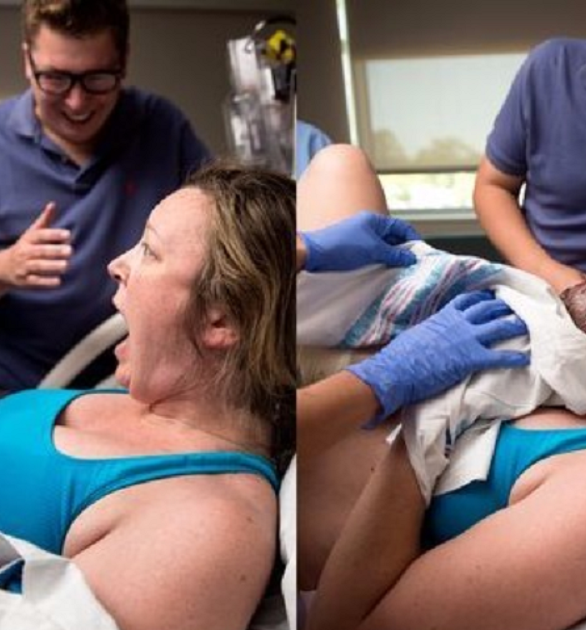 Let your husband or mother let you go for a couple of hours a week to go shopping, to a friend, to a salon.
Let your husband or mother let you go for a couple of hours a week to go shopping, to a friend, to a salon. - Distribute responsibilities - let your spouse help you. This is a kind of test of the strength of a relationship.
- Eat well, but don't overeat. Give preference to cereals, vegetables, fruits, lean meats. nine0017
- Sleep with your baby. Recovery is the most important thing for you.
- Read books or find a hobby you love. A hobby will bring you back to a resourceful state.
Do not hesitate to ask loved ones for help, and if this does not help, be sure to find a psychologist or psychotherapist. Remember that a healthy and happy mother is a priority for a child.
The first days in the hospital - articles from the specialists of the clinic "Mother and Child"
Bogomolova Marina Vadimovna
Embryologist
Clinic "Mother and Child" St. Petersburg
Immediately after childbirth
Immediately after the birth of the baby is placed on the mother's stomach , then the umbilical cord is cut and the baby is applied to the mother's breast.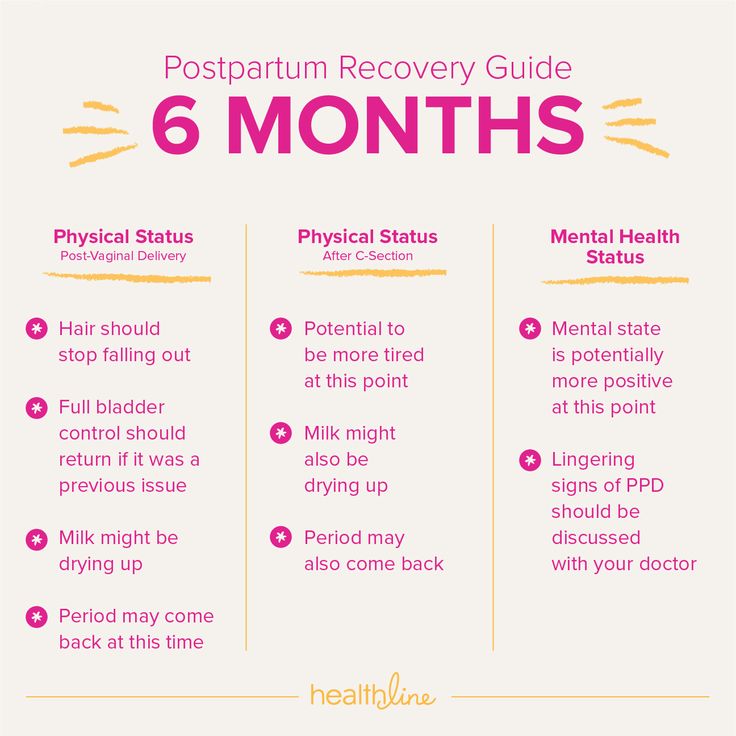 Then the skin of the newborn is cleaned, its length and weight, head and chest circumference are measured. The doctor examines the birth canal, if necessary, sews up tears in the soft tissues of the birth canal, assesses the tone of the postpartum uterus, and helps the woman empty her bladder. But even after all these standard manipulations, the mother is not transferred to the postpartum ward, another for two to three hours, the puerperal stays in the maternity block . Why? In the first two hours after childbirth, some complications are possible, primarily uterine bleeding or an increase in blood pressure. Therefore, during these two hours, the mother lies on a stretcher or a bed in the maternity ward, since doctors and midwives are constantly there, and the operating room, in which case, is also located nearby. The child at this time is usually taken to the children's department, where he most often sleeps. And only two hours later, if everything is fine, the mother is transferred to the postpartum ward.
Then the skin of the newborn is cleaned, its length and weight, head and chest circumference are measured. The doctor examines the birth canal, if necessary, sews up tears in the soft tissues of the birth canal, assesses the tone of the postpartum uterus, and helps the woman empty her bladder. But even after all these standard manipulations, the mother is not transferred to the postpartum ward, another for two to three hours, the puerperal stays in the maternity block . Why? In the first two hours after childbirth, some complications are possible, primarily uterine bleeding or an increase in blood pressure. Therefore, during these two hours, the mother lies on a stretcher or a bed in the maternity ward, since doctors and midwives are constantly there, and the operating room, in which case, is also located nearby. The child at this time is usually taken to the children's department, where he most often sleeps. And only two hours later, if everything is fine, the mother is transferred to the postpartum ward. nine0008
nine0008
How does a woman feel at this time? Chills may occur, abdominal pain may occur, especially in multiparas.
What should a woman do at this time? Relax and unwind. Take shelter so as not to freeze, especially if chills appear. Place an ice pack on the uterus. If possible, ask the midwife to bring hot tea.
1st day after birth
Soon after the woman is transferred to the postpartum ward, she will come to postnatal midwife . She will tell you about the arrangement of the department (where the shower, toilet, dining room are), about the daily routine (the time for visiting doctors, eating) and will help the young mother, if necessary, to empty the bladder using a catheter. If a woman lies together with the baby, then immediately after the transfer to the postpartum ward, the child will be brought to her. The midwife will help the mother to properly attach the baby to the breast and start breastfeeding. Then come pediatric nurse : She will show you how to swaddle your baby and explain how to take care of him. Do not be afraid that after childbirth there will not be enough strength for the child: most newborns sleep most of the day and wake up only for feeding. In addition, in the maternity hospital, the child is usually washed and dressed by nurses, so that the woman will have enough time to relax. If there is no joint stay of mother and child in the maternity hospital, then every three hours they will bring him to the ward for feeding, and then take him back to the children's department. Over time, the woman herself will pick up and carry the child. nine0008
Do not be afraid that after childbirth there will not be enough strength for the child: most newborns sleep most of the day and wake up only for feeding. In addition, in the maternity hospital, the child is usually washed and dressed by nurses, so that the woman will have enough time to relax. If there is no joint stay of mother and child in the maternity hospital, then every three hours they will bring him to the ward for feeding, and then take him back to the children's department. Over time, the woman herself will pick up and carry the child. nine0008
How does a woman feel at this time? On the first day after giving birth, women feel differently. Some experience an incredible elation (this is due to the release of endorphins into the blood - the hormones of pleasure), while others, on the contrary, feel very tired. Some want to call all their friends and announce the birth of a child, they are inspired, full of energy and ready to take care of the baby on their own. Other mothers want to be alone and come to their senses, they still do not have the strength to constantly be with the child. nine0008
nine0008
What should a woman do at this time? In any case, immediately after childbirth, as after any heavy load, you need to restore strength: first eat, and then go to bed or just relax. By the way, the following situation is possible: the birth occurred in the evening or at night, and dinner time has already expired; therefore, in order not to starve, you need to bring something light for a snack (cookies, bread rolls) with you to the hospital in advance.
Mom can usually get out of bed 6 hours after birth. nine0008
In general, if the childbirth went without complications, then you should start getting up as early as possible, first with the help of a midwife, and then on your own.
This helps to improve blood circulation, normalize the functioning of the urinary system and intestines, and accelerate healing processes. In addition, very soon the baby will require more attention.
Important point: After childbirth, the tone of the bladder decreases, so the urge to urinate may be absent or it may become painful and frequent.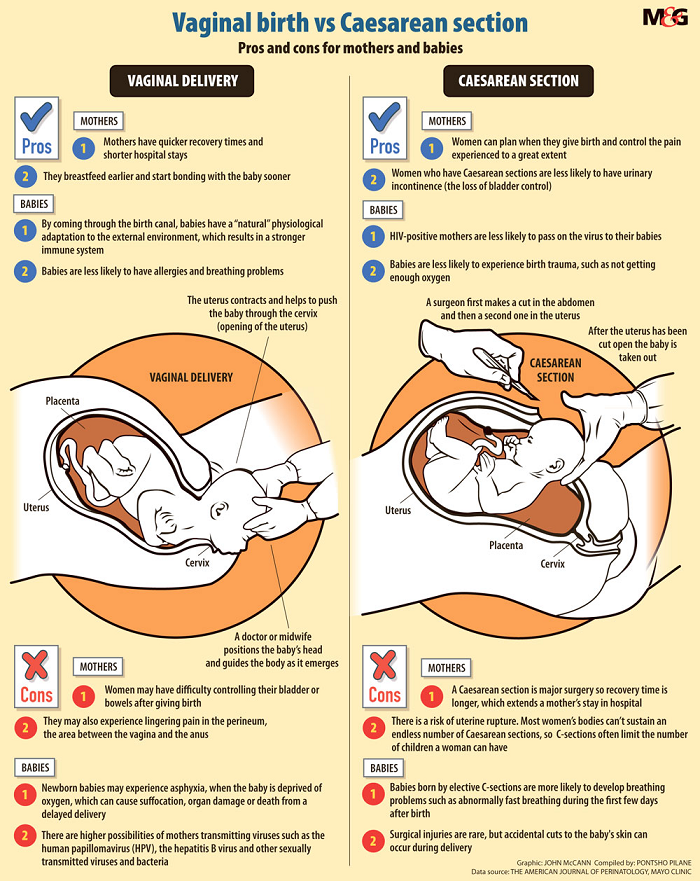 However, you should go to the toilet at least four times a day. Urination can be caused reflexively by opening a tap with water, this helps many people a lot. In the absence of the desired effect, urine is removed by a catheter. Most often there is no stool on the first day after birth. nine0008
However, you should go to the toilet at least four times a day. Urination can be caused reflexively by opening a tap with water, this helps many people a lot. In the absence of the desired effect, urine is removed by a catheter. Most often there is no stool on the first day after birth. nine0008
The next days
Every day, the mother will be examined by an obstetrician-gynecologist : he will evaluate the contraction of the uterus, the condition of the sutures and the amount of discharge, see if colostrum is secreted. The midwife will regularly measure the temperature, pulse, blood pressure and treat the external stitches with disinfectant solutions several times a day. Also, every day the baby will be watched by a pediatrician, after which he will tell his mother about the condition of the child. After a normal birth, a woman, as a rule, is discharged on the 3rd-4th day (after a caesarean section - on the 5th-6th). nine0008
How does a woman feel at this time?
After childbirth, a woman may experience pain in the abdomen due to uterine contractions, as well as slight muscle pain in different parts of the body. On the face and on the whites of the eyes, a “rash” may appear - pinpoint hemorrhages that appear due to the fact that small capillaries burst during attempts from tension. Blood pressure can be lowered, so dizziness is possible (to avoid it, you should get up smoothly, without sudden movements). There may be pain in the perineum, even if there were no tears and its incision (pain appears because the perineum was severely stretched during childbirth). If the perineum is sutured, then it will not be possible to sit for at least the first two weeks. Sometimes after childbirth, varicose veins appear in the anus (hemorrhoids), which means discomfort in this place. nine0008
On the face and on the whites of the eyes, a “rash” may appear - pinpoint hemorrhages that appear due to the fact that small capillaries burst during attempts from tension. Blood pressure can be lowered, so dizziness is possible (to avoid it, you should get up smoothly, without sudden movements). There may be pain in the perineum, even if there were no tears and its incision (pain appears because the perineum was severely stretched during childbirth). If the perineum is sutured, then it will not be possible to sit for at least the first two weeks. Sometimes after childbirth, varicose veins appear in the anus (hemorrhoids), which means discomfort in this place. nine0008
What should a woman do at this time? Mom needs to continue to rest and gain strength. And you should also follow the rules of personal hygiene: often change postpartum pads, do air baths for seams (if any), take a shower daily, wash yourself every time after a bowel movement. Well, the most important thing is to establish breastfeeding and learn how to take care of the baby in practice.
Time in the maternity hospital flies very quickly. Try to spend it usefully - restore your strength and acquire useful skills: at home, all this will be very useful to you! nine0235
REMINDER
Things to do at the maternity hospital
- Have a good rest: sleep all your free time and eat well.
- Get complete information about your child's condition: so ask your pediatrician all your questions.
- Establish contact with the child: therefore, spend as much time with the baby as possible, ideally being with him all the time. Take the baby in your arms, unfold the diapers, carefully examine the baby without clothes. nine0017
- Learn how to take care of your baby: so ask your baby nurse to show you how to wash your baby, how to change clothes, swaddle, change diapers, clean ears and nose, cut nails.
- Establish breastfeeding: To do this, feed your baby on demand. Ask the midwife to show you how to properly hold the baby at the breast, how to give and take away the breast.
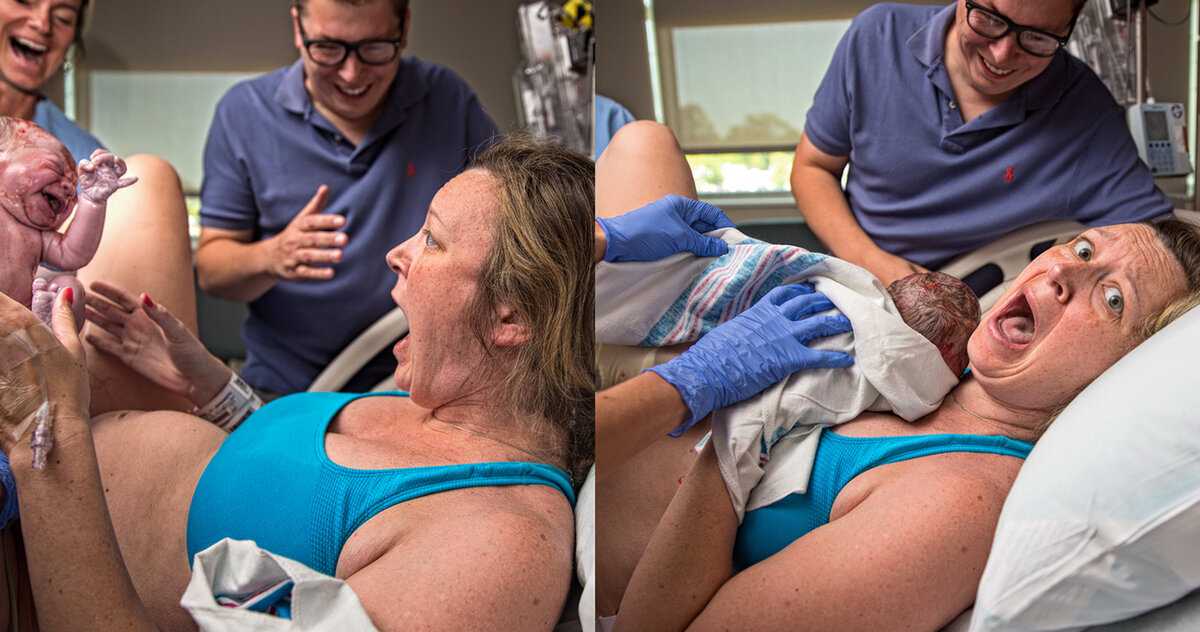
Make an appointment
to the doctor - Bogomolova Marina Vadimovna
Clinic "Mother and Child" St. Petersburg
Cryopreservation of single spermatozoa Cryopreservation of embryos, eggs, spermJoint consultation of a reproductive specialist and an embryologistEmbryology
By clicking on the send button, I consent to the processing of personal data
Attention! Prices for services in different clinics may vary. To clarify the current cost, select a clinic
nine0007 Clinical Hospital MD GROUP LAHTAK Clinic "Mother and Child" St. PetersburgAll directionsSpecialist consultations (adults)Molecular genetics laboratoryGeneral clinical researchTreatment roomOther gynecological operationsTelemedicine for adultsTherapeutic researchUltrasound examinations for adults
nine0007 01.
